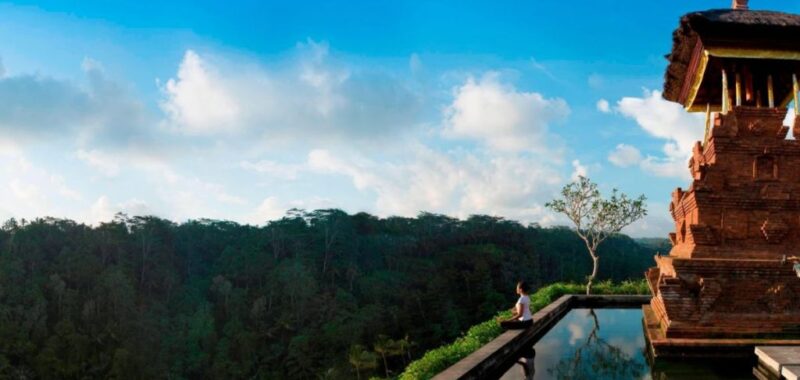Luxury travel in Asia Pacific (APAC) isn’t what it used to be. It’s no longer about five countries in two weeks, infinity pools, or flashy labels. The new status symbol? Traveling with intention and often, to places no one expects.
Take Bangladesh, for example. The destination is now gaining popularity among luxury travelers in the region, as per a new report from the Luxury Group by Marriott International. This sure says a lot about where luxury travel is heading.
According to the 2025 Intentional Traveler Report, released Tuesday, Asia Pacific’s affluent travelers are pulling back on how often they travel, but spending more when they do.
“In 2025, luxury travel is no longer about spontaneity, it’s about intention,” the report states. “The modern luxury itinerary is meticulously planned, deeply personal, and designed to deliver meaningful returns — emotional, sensory, and transformational.”
The findings, based on responses from 1,750 travelers in the top 10% income bracket across seven APAC markets — Australia, Singapore, India, Indonesia, South Korea, Japan, and Thailand, reflect a recalibration of what luxury means in 2025.
Travelers Are Booking Fewer But More Meaningful Trips
These travelers are not chasing more. They are chasing better. They are favoring lesser trips, shorter international stays, but domestic stays have increased.
They are planning trips further in advance doing their own research and paying attention to details that align with their values, like wellness, cultural immersion, personalization and nature. That includes tools like AI, which nearly one in five respondents now use to plan their travel.
The biggest motivator? Food. More than half said discovering new culinary experiences was “very important” when choosing where to go. Returning to a place they love and enjoying exclusive, personalized experiences followed closely behind.
A recent survey released by Boston Consulting Group (BCG)also ranked food as a top motivator for Asian travelers with travelers planning entire trips around food experiences.
While many plan to revisit familiar destinations, new markets are rising. Bangladesh, Cambodia and New Zealand are gaining popularity among luxury travelers in the region.
Wellness Is No Longer a Bonus
Wellness has moved from a side benefit to a primary reason for travel. Affluent travelers in the region say wellness offerings influence where they stay. And it is not just about a massage or spa treatment thrown during the stay, these travelers are looking for entire journeys built around health and rejuvenation.
Two-thirds of wellness travelers are staying within Asia. Domestic trips average three days, international wellness getaways last four. For longer retreats, travelers are spending up to nine days locally and more than 10 days abroad.
These trips are also no longer just solo activities. More than half are traveling with partners or family. That means wellness programs need to work for groups, not just individuals. Think guided nature walks, custom sleep programs, fitness and nutrition coaching, and mindfulness experiences.
Travelers are spending more on these wellness trips than almost any other kind. Only education-focused travel tops it.
For travel companies, the message is clear. Go beyond spa menus. Create programs that feel customized, immersive and meaningful.
The ‘Do-It-All’ Itinerary Is Back With a Twist
Travelers are choosing fewer trips, but they are filling them with more activities. Nearly two-thirds now prefer packed daytime schedules that include adventure, food, culture and exploration.
Evenings, however, are getting quieter. More travelers are choosing to stay in and unwind. In-room dining, private spa treatments and restful downtime are taking priority over nightlife.
That shift presents an opportunity. Travel companies need to design itineraries that offer a mix of energy and calm. That means combining guided excursions or adrenaline-filled activities with evening experiences like fine dining or cultural performances.
Who Travelers Go With Is Just as Important
Family remains central. Half of all trips are with immediate family, but other groups are growing. The number of solo parents traveling with children rose from 15% to 24% in one year.
This group values meaning over extravagance. They are booking safaris, educational trips and even religious pilgrimages. They are also choosing different accommodations. While luxury hotels are still popular, many opt for homestays, Airbnb rentals or even staying with friends.
For travel brands, this means understanding that luxury is not always about opulence. Flexibility and trust can matter more.
Gen Z Wants Travel That Feels Authentic
Asia Pacific’s youngest high-end travelers are traveling with purpose. For Gen Z, that includes being in nature, meeting local communities and learning new skills while abroad.
They are looking for seamless tech integration, sustainability and authentic experiences. Many are traveling alone or in small groups. A significant number are also mixing work and play.
For companies hoping to reach this group, digital-first planning tools and personalized services are no longer optional. Trips need to feel real, not just curated.
Deeper Stories, Tighter Plans
Companies need to offer more than just high-end features. They need to provide services that feel personal, flexible and emotionally rewarding.
Curated matters more than crowded. It means that quiet luxury, experiences that feel exclusive, personal, and meaningful, trumps flashy, mass-market indulgence. And it means that travel companies need to design for what these travelers really want: deeper stories, tighter plans, and services that feel like they were made just for them.

